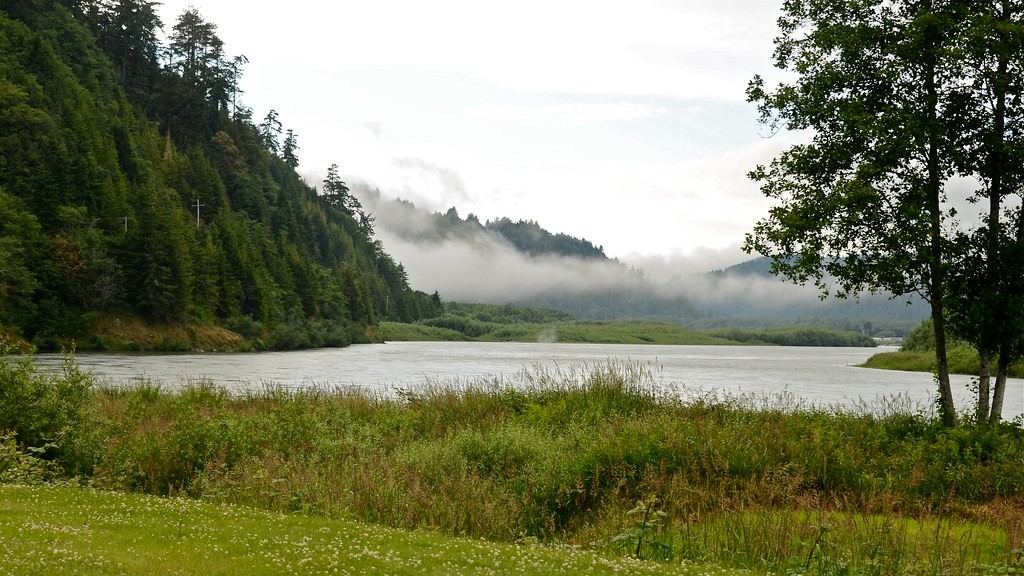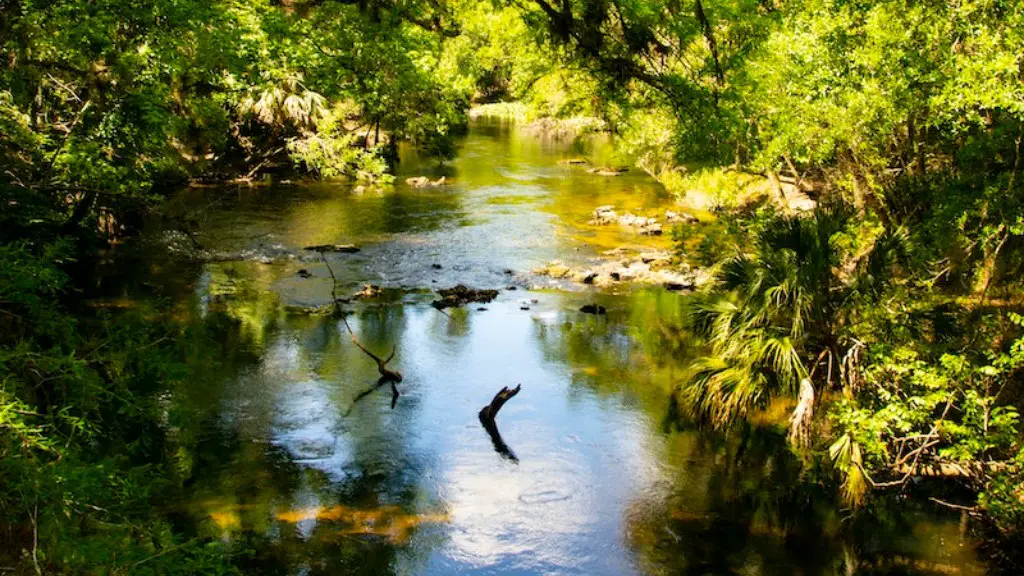Ecology of the Nile River
The Nile River is one of the largest and oldest rivers in the world and has been an important source of life in Africa for thousands of years. The river is more than 4,000 miles long, runs through ten countries, and is essential for producing irrigation and hydroelectric power in those regions. Although the river is historically significant due to its longstanding use by the people of east Africa, its ecology is intricately unique and creates a home to countless plant and animal species.
The ecology of the Nile River is incredibly diverse, with a mix of shallow, fast-flowing waters, mysterious deep pools, and lush vegetation. This diversity creates variety within the fish and bird populations, with over 300 different species of birds and about 125 species of fish living off the banks of the river. Many of the native fish species are considered to be endangered due to habitat loss, overfishing, and water pollution. The Nile River is also known to be host to several species of frogs, reptiles, and numerous types of insects.
Fertile Soil of the Nile Delta
The large delta at the end of the river is known for its incredibly fertile soil, which has supported human life since ancient times. The broad range of nutrients within the soil allows for a wide array of crops to be cultivated in the area, including cotton, grains, and vegetables. The delta is central to food production for many of the people living along the river and is one of the leading agricultural regions in all of Africa.
The region has also experienced a high level of erosion due to the combination of human activity and the Mediterranean Sea’s continual battering of the delta’s coastline. This erosion has caused the land to become more vulnerable to flooding, leading to an increase in the frequency of flooding in the area. This flooding creates an ideal environment for certain species of plants and animals, but it has also caused much of the soil in the area to become less fertile.
Egyptian Pyramids & Archaeology
The Nile River also remains an important source for archaeological research, with numerous sites along the banks of the river that provide a glimpse into ancient life. The most iconic of these sites are the three great pyramids of Giza, which were built centuries ago and remain a source of mystery to this day. Scientists and historians continue to uncover more about these ancient societies by studying the artifacts and features found near the pyramids.
In addition to the pyramids, the river is known to host a number of artifacts from ancient times. Archaeologists have discovered coins and pottery along the banks of the river that provide clues about the people who lived in the area centuries ago. The artifacts at these sites give us a glimpse into the past and help us to understand more about life in the region.
Nile Sports and Recreation
The Nile River is also known for its numerous recreational opportunities. One of the most popular activities is whitewater rafting, which is available in various spots along the river. Some of the rapids on the Nile can be quite dangerous, so it is important to take proper safety precautions and wear the appropriate equipment when rafting.
Fishing is another popular form of recreation in the Nile. The river is known to be a great spot for anglers to cast their lines and possibly reel in a big one. Various species of Nile fish can be caught, including tilapia and catfish. For those who prefer to observe wildlife, the banks of the river provide a great opportunity for bird watching, with many of the area’s feathered friends making nests along the river’s edge.
African Dams and Diversions
The river is known to be a reliable source of water for the many countries that lie along its banks. In recent years, many African nations have started constructing dams and diversions in order to regulate water flow and increase access to electricity. In some cases, these dams have resulted in a drastic change in the river’s ecology and have led to the displacement of large numbers of people.
The construction of dams has also changed the river’s course in some places, which has led to an increase in flooding and soil erosion. These problems have arisen because the regulated water flow has caused the river to carry away more sediment than it usually would. In addition, many of the fish species who are native to the river have been adversely affected due to the dams, with several species beginning to become endangered.
Nile Tourism
The Nile River is also a popular destination for tourists, and there are many tour companies who offer boat trips up and down the river. These trips provide a unique way for travelers to experience the rich history and culture of the countries along the river. Tourists can look forward to seeing a variety of natural and man-made attractions along the way, such as ancient temples and monuments, as well as stunning wildlife.
Local communities also benefit from the influx of tourism, as the money generated from these trips often goes to improve infrastructure and services in the area. The presence of tourists also brings greater awareness to local issues such as preservation of the river and the environment, which can lead to more sustainable development.
Nile Dam Dispute
The river has also become increasingly politicized in recent years, as the different countries who share the Nile have often lurched into disagreements when trying to agree on water-sharing agreements. This is most notable in the ongoing dispute between Egypt and Ethiopia, which centers around the construction of the Grand Ethiopian Renaissance Dam. This dam is intended to produce hydroelectric power for Ethiopia and its neighboring countries, but it has caused much controversy due to the potential for it to drastically reduce water flows in the Nile River.
Meanwhile, the people of Egypt are concerned that the dam will reduce the water supply coming into their country, leading to a shortage of crops, food, and drinking water. As a result, the situation is currently in a stalemate as both countries are still trying to resolve the dispute.
Releasing Freshwater Into The Dead Sea
Recently, a proposal to release freshwater into the Dead Sea has been gaining traction. The plan is to connect the Red Sea to the Dead Sea using a series of canals and tunnels, which would allow for freshwater to flow into the Dead Sea and replenish its devastatingly low water levels.
Whilst the initiative has been met with some enthusiasm from countries such as Jordan, the plan is yet to gain support from all of the countries involved. Some of the issues that have caused concern are the potential environmental consequences caused by the sudden influx of saline water into the Dead Sea. For example, there are worries about the potential for contaminants to become concentrated in the lake due to the process of evaporation.
Great Control of Nile Water
Although the Nile River is renowned for its length, its interconnectedness with other countries poses a challenge in terms of managing its water. Up until recently, no country had ever been able to fully control the river’s flow.
This is all set to change, however, as in 2021 the construction of the Grand Ethiopian-Sudanese Dam is due to complete. This dam will be the biggest hydroelectric dam in the world and will have the capacity to generate an unprecedented amount of power.
The completion of such a large-scale project is set to revolutionize how countries manage water from the Nile. The dam will also reduce the need for water storage, as well as making water management much more effective. As a result, countries along the Nile’s banks will be able to control the river’s flow more effectively and efficiently.
Impact Of The Nile On African Economies
The Nile River has proven to be integral for African economies, as its water is essential for agricultural and industrial activity. Without it, countries along the river’s banks would suffer from a lack of arable land, fresh water, and power.
As such, the Nile has played an important part in the economic development of these countries, as its waters have enabled both rural and urban development in the region. In the modern day, the Nile continues to be one of the main sources of income for countries around the river, and it is likely to remain so into the future.
River Pollution Prominent Along The Nile
Whilst the Nile is essential for life, the presence of human activity along the river has led to the depletion of its natural resources. This is mainly due to the prevalence of water pollution, which is caused by toxic substances such as chemicals and waste being thrown into the river.
Additionally, water scarcity is becoming an increasing problem in the region, as the demand for water is greater than the supply in certain areas. This is mainly due to a lack of regulation and enforcement, which has resulted in overexploitation of the river’s resources.
Conclusion of The Nile’s Ecological Contributions
It is clear that the Nile River plays an important role in the lives of the people of Africa and its wildlife. Not only is it a source of nourishment and sustenance for numerous species, but it also provides recreational opportunities, historic artifacts, and an invaluable source of water for human consumption.
Nevertheless, the river is faced with a multitude of issues, including political discord, environmental degradation, and water pollution, which are having a detrimental effect on the ecosystem. Although much work needs to be done in order to protect the river, its continued importance for the people and its wildlife make it long-lasting and unendingly fascinating.



